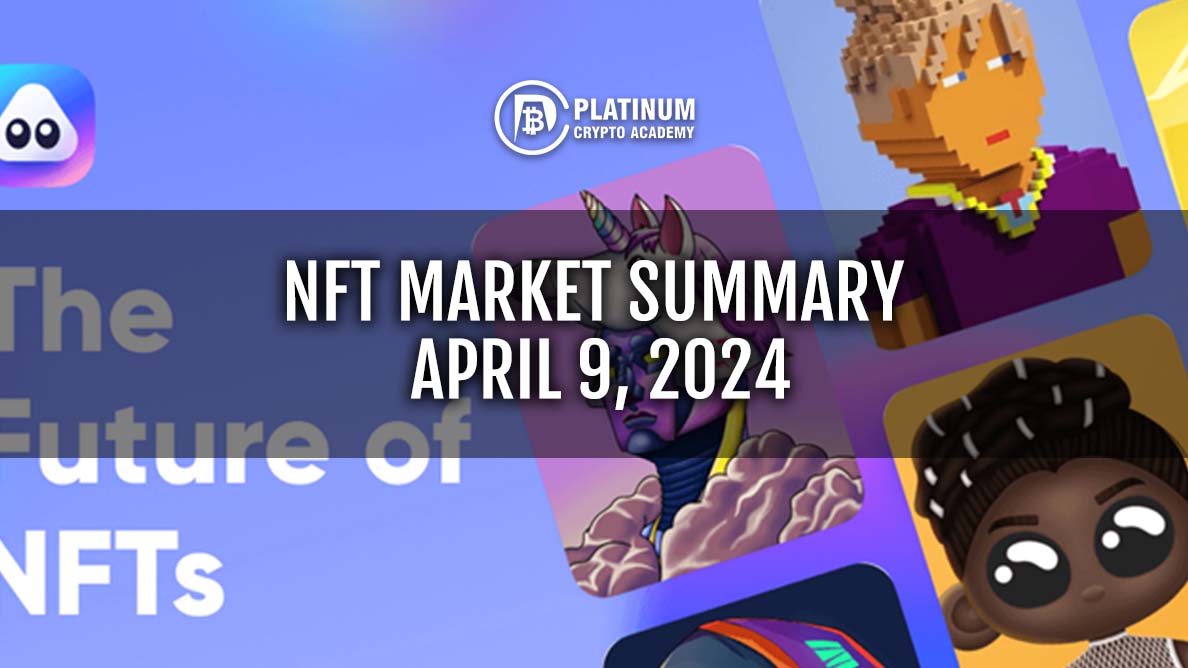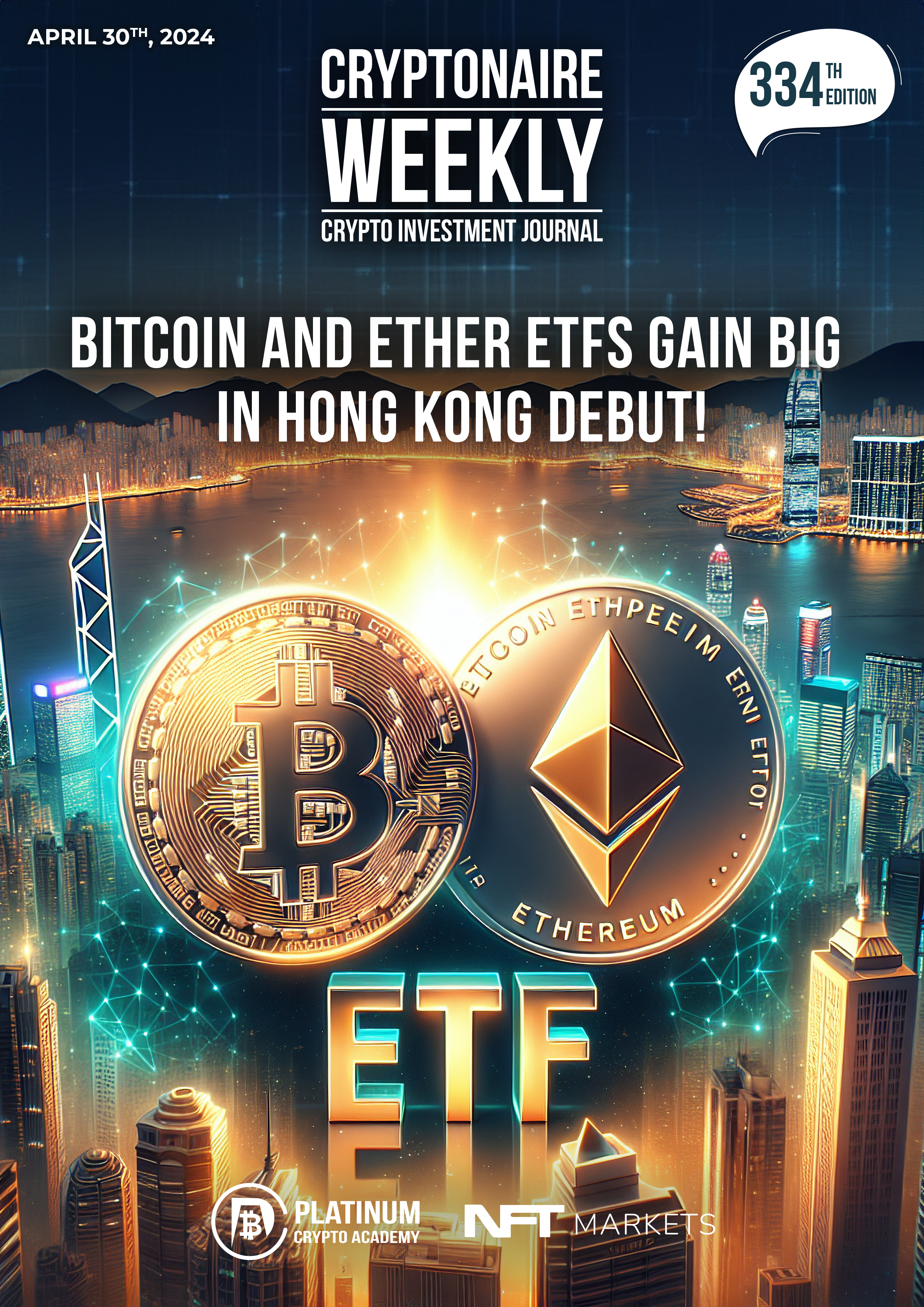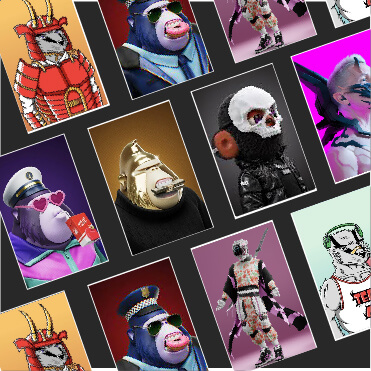The NFT market, once hailed for its meteoric rise and exorbitant sales figures, has encountered a substantial downturn in recent months, casting a shadow of uncertainty over its future trajectory. Since its peak in the spring of 2022, the market has witnessed a dramatic decline, with floor prices plummeting below 30 ether, marking an alarming 83% decrease from its previous all-time high.
The inception of the Ethereum ERC-721 token marked the beginning of a remarkable surge in the NFT market, characterized by unprecedented price bubbles and record-breaking sales. Notable transactions, such as Beeple’s staggering US$61 million NFT sale and Damien Hirst’s ‘The Currency’ collection fetching an impressive US$89 million, fueled the perception of an unstoppable NFT boom.
During the peak period between August 2021 and April 2022, weekly trading volumes soared to unprecedented heights, often surpassing the US$750 million to US$1.5 billion range. However, the euphoria surrounding NFTs has since subsided, with the average price of token sales experiencing a staggering 92% decline from 2022 to 2023, plummeting from US$3,894 to a mere US$293, as per data from Chainalysis.
The abrupt downturn in the NFT market has raised pressing questions about its underlying causes and implications for the future. Interestingly, amidst the NFT market’s decline, Bitcoin’s price has surged, prompting speculation about a potential correlation between the performance of the cryptocurrency and NFT markets.
But what factors have contributed to the sharp decline in the NFT market, and what does this signify for its future trajectory? As market participants grapple with these questions, the fate of NFTs hangs in the balance, awaiting clarity amidst the uncertainty that shrouds their future.
Debating the Correlation between Blockchain Assets
The correlation between blockchain-based assets has stirred considerable debate within the financial community, with diverging views on the relationship between the strength of the crypto market and traditional financial markets.
Alun Evans’ Perspective: Cryptocurrencies as Commodities
According to Alun Evans, CEO of Freeverse, the recent surge in the crypto market cannot be solely attributed to perceived weaknesses in traditional financial markets. Evans underscores the evolving perception of cryptocurrencies as commodities, distinct from traditional currencies. He emphasizes that Bitcoin, in particular, is increasingly regulated as a commodity in most jurisdictions, challenging the notion of cryptocurrencies as mere alternatives to fiat currencies.
Toby Rush’s Contrasting View: A Symbiotic Relationship
In contrast, Toby Rush, CEO and Co-founder of Redeem, argues for a symbiotic relationship between Bitcoin and NFTs. Rush contends that the rise of Bitcoin and the resilience of NFTs are interconnected, reflecting broader trends of consumer interest and engagement with blockchain innovations. He points to ongoing developments and innovations within the NFT space as evidence of sustained consumer appetite for emerging NFT technologies.
The Significance of NFT Innovation
Rush’s perspective underscores the significance of ongoing initiatives and advancements within the NFT market. Despite fluctuations in overall market performance, Rush suggests that consumer demand for NFT innovations remains robust. This resilience underscores the enduring appeal of NFTs as a medium for digital asset ownership and engagement, challenging narratives of decline and signaling potential opportunities for continued growth and innovation within the blockchain ecosystem.
Despite Present Downturn, NFT Market Poised for Future Growth
Despite the current downturn in the NFT market, there is optimism regarding its future trajectory. By reframing NFTs as more than just speculative investments or tradable assets, the outlook for the NFT market appears promising despite its current challenges.
Data sourced from Statista indicates a positive growth trajectory for the NFT market, with projections indicating a substantial increase in market size. The market is anticipated to expand to US$3.2 billion by 2027, representing a compound annual growth rate (CAGR) of 18.55% from its 2023 valuation of US$1.6 billion.
Furthermore, the number of NFT users is expected to experience significant growth, reaching an estimated 19.31 million by 2027. This surge in user adoption is anticipated to result in a user penetration rate of 0.2% by the same year.
These projections paint a promising picture for the future of NFTs, indicating a growing recognition of their value beyond mere speculative assets. As the market evolves and stakeholders begin to perceive NFTs through a different lens, the current downturn is anticipated to be temporary, with brighter prospects on the horizon.
Understanding NFTs: Beyond Investment Speculation
Alun Evans, CEO of Freeverse, offers a refreshing perspective on the recent downturn in the NFT market. Contrary to widespread concern, Evans believes that investments should not be the primary or ideal use case for NFTs. He emphasizes that the true value of blockchain and web3 technology lies in the ownership of digital assets and their ability to evolve based on user interactions.
“Investments are not the ideal use case for NFT technology in the long run,” asserts Evans. “The true value of the blockchain and web3 technology is not in artificial scarcity but in ownership of digital assets and enabling those assets to evolve based on how the owner uses them.”
Evans highlights the potential of blockchain technology to introduce liquidity into previously inaccessible areas, such as assets in video games or loyalty programs for large brands. By leveraging NFTs, digital assets can become more versatile and dynamic, evolving alongside user interactions and preferences.
In light of this perspective, the recent drop in market prices for NFTs may be viewed as an adjustment in understanding their best use case. Evans suggests that as stakeholders recognize the broader utility of NFTs beyond mere investment speculation, the market is undergoing a maturation process.
“After all,” concludes Evans, “the ERC-721 token was only first released in 2017.” This reminder underscores the relatively nascent stage of NFT technology and its potential for further evolution and innovation in the years to come.
Exploring the Future Role of NFTs: Beyond Investment Speculation
Alun Evans, an advocate for the future potential of NFTs, suggests that their role as an investment is merely scratching the surface of their broader utility. He posits that while NFTs can function as tradable assets, akin to gold or art, their true value lies in their ability to generate liquidity in previously inaccessible areas.
“While NFTs can temporarily serve as investments or stores of value, this should not be their primary use case moving forward,” emphasizes Evans. “The power of tokenizing assets lies in unlocking liquidity where it was previously unavailable. The value of NFTs should be determined by their utility — where and how they can be utilized — rather than solely by their scarcity.”
Evans believes that NFT technology holds more practical and valuable applications beyond the initial wave of hype and speculation. He suggests that the next generation of NFTs, known as “dynamic” NFTs, present a more promising future for the technology.
“Dynamic NFTs offer a departure from traditional NFTs that derive value solely from scarcity or speculation,” explains Evans. “Instead, they enable active engagement with the underlying brand or offering, encouraging owners to interact, share, or even trade them. This fosters increased long-term user retention and opens significant opportunities for industries such as gaming and brands in general.”
Toby Rush, CEO of Redeem, echoes Evans’ sentiment, emphasizing the vast scope of NFTs beyond investments and trading. He emphasizes that NFTs can transcend their initial use cases, much like how static websites evolved to offer dynamic and interactive experiences on the internet.
“NFT-powered tickets, for example, can serve as cryptographic proof of ownership and authenticity, granting holders access to live events without the risk of purchasing counterfeit tickets,” explains Rush. “They can also provide users with exclusive benefits based on their interaction history, purchases, or other unique aspects of their experience. Ultimately, prioritizing utility unlocks new revenue streams for businesses and provides a seamless entry point for users into the Web3 space.”
Exploring NFTs’ Role in the Metaverse: Unlocking Digital Ownership
The integration of NFTs into the metaverse landscape sparks intriguing questions about their potential role in shaping digital experiences. If utility is indeed paramount for the future application of NFTs, how do they fit into the fabric of the metaverse? Given the anticipated impact of crypto and blockchain-based assets in this virtual frontier, the significance of NFTs becomes a compelling topic of discussion.
Alun Evans, shedding light on this matter, sees NFTs playing a significant role in the metaverse. He views the metaverse as an extension of our digital existence, where individuals have the freedom to curate their virtual identities. In this context, the importance of digital possessions becomes evident. Evans underscores that beyond their current predominant use case as investment vehicles, NFTs excel in showcasing ownership of digital items, both within the metaverse and beyond.
Toby Rush concurs, labeling NFTs as one of the fundamental pillars enabled by blockchain technology. He envisions NFTs retaining their significance in the emerging Web3 ecosystem, emphasizing their potential for evolution and adaptation. Rush points to the growing trend of token-gated events, where specific NFT holders gain exclusive access to real-world or metaversal experiences, as evidence of NFTs’ expanding utility.
Moreover, Rush highlights the burgeoning “phygital” movement, which bridges physical luxury goods with their digital counterparts. While these initiatives may encounter slower traction in the West, Rush notes a more receptive audience in Asia. He cites the example of a metaverse event hosted by the K-Pop group BlackPink, attracting a staggering 46 million users. This enthusiastic response underscores Asia’s openness to Web3 technologies and suggests a promising trajectory for NFT adoption.
As Rush emphasizes, Asia often serves as a trailblazer for digital trends, signaling that we are still in the nascent stages of unlocking the full potential of NFTs. This enthusiastic embrace of NFTs in Asia offers a positive outlook for their future evolution and underscores the transformative role they can play in shaping the metaverse landscape.
Wrap Up
In conclusion, the discourse surrounding the role of NFTs in both the broader digital landscape and the emerging metaverse underscores their transformative potential. Alun Evans and Toby Rush provide compelling insights into the multifaceted nature of NFTs, emphasizing their capacity to redefine notions of ownership, utility, and engagement.
As Evans aptly observes, the true value of NFTs lies beyond their current perception as speculative investments. Instead, they serve as tangible manifestations of digital ownership, facilitating unprecedented levels of interaction and customization within virtual environments. This reimagining of ownership extends into the metaverse, where individuals can curate their digital identities and showcase their digital possessions with pride.
Rush further underscores the dynamic nature of NFTs, highlighting their adaptability and resilience in the face of evolving consumer preferences and market trends. From token-gated events to the fusion of physical and digital realms through the “phygital” movement, NFTs continue to pave the way for innovative applications that blur the lines between the virtual and the real.
As we navigate the ever-expanding frontier of Web3 technologies, the potential of NFTs remains limitless. Their ability to bridge physical and digital worlds, empower creators and consumers alike, and foster vibrant communities signals a digital renaissance in the making.
In this digital renaissance, NFTs emerge as catalysts for creativity, collaboration, and empowerment, ushering in a new era of decentralized ownership and expression. As we embark on this transformative journey, one thing remains clear: the future of NFTs is bright, promising, and full of possibilities.



